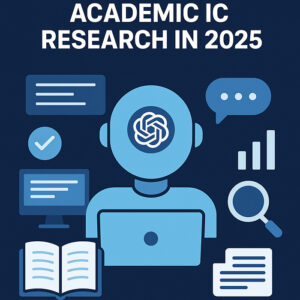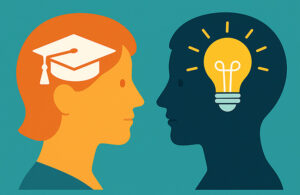Advanced Reinforcement Learning: The Future of Intelligent Systems
Introduction: The Revolutionary Impact of Learning from Experience
Reinforcement learning (RL) represents one of the most fascinating branches of artificial intelligence—a computational approach that mirrors how humans naturally learn through trial, error, and reward. Unlike other machine learning paradigms that require extensive labeled datasets, reinforcement learning agents discover optimal behaviors through direct interaction with their environments, making this approach uniquely powerful for solving complex, sequential decision-making problems.
In today’s rapidly evolving technological landscape, reinforcement learning stands at the forefront of AI innovation, driving breakthroughs across numerous fields from autonomous vehicles to personalized medicine, advanced robotics to financial trading systems. As computational power grows and algorithms become more sophisticated, we’re witnessing an unprecedented expansion in both the theoretical foundations and practical applications of reinforcement learning.
This comprehensive guide delves deep into the world of reinforcement learning—exploring its mathematical underpinnings, examining cutting-edge algorithms, showcasing transformative real-world applications, and investigating the exciting frontiers that researchers are currently exploring. Whether you’re a machine learning practitioner, an industry professional, or simply an enthusiast curious about the future of AI, this exploration offers valuable insights into one of technology’s most promising domains.
The Mathematical Foundations of Reinforcement Learning
Markov Decision Processes: The Formal Framework
At the heart of reinforcement learning lies the mathematical framework of Markov Decision Processes (MDPs), which provide a formal way to model sequential decision-making problems where outcomes are partly random and partly under the control of a decision-maker.
An MDP is defined by the following components:
- State Space (S): The set of all possible situations or configurations of the environment
- Action Space (A): The set of all possible actions the agent can take
- Transition Probability Function P(s’|s,a): The probability of transitioning to state s’ given that action a was taken in state s
- Reward Function R(s,a,s’): The immediate reward received after transitioning from state s to state s’ due to action a
- Discount Factor γ: A parameter between 0 and 1 that determines the present value of future rewards
The goal in an MDP is to find a policy π: S → A that maximizes the expected cumulative discounted reward:
![]()
This equation, known as the value function, represents the expected return when starting in state s and following policy π thereafter.
Bellman Equations: The Optimality Principle
The Bellman equations form the theoretical foundation for many reinforcement learning algorithms. They express the relationship between the value of a state and the values of its successor states, embodying the principle of dynamic programming.
For a given policy π, the Bellman expectation equation for the state-value function is:
![]()
The optimal value function V* satisfies the Bellman optimality equation:
![]()
Similarly, we can define the action-value function Q(s,a), which represents the expected return of taking action a in state s and then following policy π:
![]()
The optimal action-value function Q* satisfies:
![]()
These equations provide the theoretical basis for algorithms like Value Iteration, Policy Iteration, Q-learning, and many others.
Partially Observable MDPs: Dealing with Uncertainty
Real-world environments rarely provide agents with complete state information. Partially Observable Markov Decision Processes (POMDPs) extend MDPs to account for this uncertainty:
- Observation Space (O): The set of possible observations the agent can receive
- Observation Function Z(o|s,a): The probability of observing o given that the agent took action a and transitioned to state s
In POMDPs, the agent maintains a belief state—a probability distribution over possible states—and updates this belief based on actions taken and observations received. This significantly increases computational complexity but better models real-world scenarios where perfect information is unavailable.
Deep Reinforcement Learning: Scaling to Complex Problems
Neural Networks as Function Approximators
Traditional tabular reinforcement learning methods become impractical with large or continuous state spaces. Deep reinforcement learning addresses this limitation by using neural networks to approximate value functions or policies.
# Example of a simple DQN implementation with PyTorch
import torch
import torch.nn as nn
import torch.optim as optim
class DQN(nn.Module):
def __init__(self, input_dim, output_dim):
super(DQN, self).__init__()
self.network = nn.Sequential(
nn.Linear(input_dim, 128),
nn.ReLU(),
nn.Linear(128, 128),
nn.ReLU(),
nn.Linear(128, output_dim)
)
def forward(self, x):
return self.network(x)
# Initialize network, target network, optimizer
state_dim = env.observation_space.shape[0]
action_dim = env.action_space.n
policy_net = DQN(state_dim, action_dim)
target_net = DQN(state_dim, action_dim)
target_net.load_state_dict(policy_net.state_dict())
optimizer = optim.Adam(policy_net.parameters(), lr=1e-4)
# Training loop components
def select_action(state, epsilon):
if random.random() < epsilon:
return torch.tensor([[random.randrange(action_dim)]])
else:
with torch.no_grad():
return policy_net(state).max(1)[1].view(1, 1)
def optimize_model(batch, gamma=0.99):
# Unpack batch of experiences
state_batch, action_batch, reward_batch, next_state_batch, done_batch = batch
# Compute Q values
current_q_values = policy_net(state_batch).gather(1, action_batch)
next_q_values = target_net(next_state_batch).max(1)[0].detach()
expected_q_values = reward_batch + gamma * next_q_values * (1 - done_batch)
# Compute loss and optimize
loss = nn.MSELoss()(current_q_values, expected_q_values.unsqueeze(1))
optimizer.zero_grad()
loss.backward()
optimizer.step()
Key Deep RL Algorithms and Architectures
The field of deep reinforcement learning has exploded with innovative algorithms in recent years:
Value-Based Methods
Deep Q-Networks (DQN): The pioneering approach that combined Q-learning with convolutional neural networks to master Atari games. Key innovations included:
- Experience replay buffer to break correlations between sequential experiences
- Target networks to reduce overestimation and improve stability
- Various extensions like Double DQN, Dueling DQN, and Prioritized Experience Replay
Rainbow DQN: Combines multiple DQN improvements:
- Double Q-learning
- Prioritized experience replay
- Dueling network architecture
- Multi-step learning
- Distributional RL
- Noisy networks for exploration
Policy Gradient Methods
REINFORCE: The classic policy gradient algorithm that directly optimizes the policy by ascending the gradient of expected return.
Trust Region Policy Optimization (TRPO): Constrains policy updates to improve stability by enforcing a KL-divergence constraint between old and new policies.
Proximal Policy Optimization (PPO): Simplifies TRPO while maintaining its benefits through a clipped objective function that discourages large policy changes.
Actor-Critic Methods
Advantage Actor-Critic (A2C/A3C): Maintains both a policy (actor) and value function (critic), using the advantage function to reduce variance in policy updates.
Soft Actor-Critic (SAC): Adds an entropy maximization term to the objective, encouraging exploration and improving robustness.
Deep Deterministic Policy Gradient (DDPG): Combines DQN with deterministic policy gradients for continuous action spaces.
Model-Based Methods
World Models: Learns an environment model including both dynamics and rewards, enabling planning and imagination-based reasoning.
MuZero: DeepMind’s algorithm that learns a model without explicit environmental dynamics, achieving state-of-the-art performance in games like Go, chess, and Atari.
Transformers in Reinforcement Learning: The Next Frontier
The transformer architecture, which revolutionized natural language processing, is now making significant inroads into reinforcement learning:
Decision Transformer: Frames reinforcement learning as a sequence modeling problem, predicting actions given a sequence of states, actions, and desired returns.
Trajectory Transformer: Treats trajectories as sequences and uses transformers to model them, enabling planning through beam search.
Gato: DeepMind’s generalist agent that uses a transformer architecture to handle multiple modalities and tasks, including reinforcement learning problems.
These approaches show promise in improving sample efficiency and generalization capabilities across diverse environments.
Watch a comprehensive explanation of Decision Transformers
Advanced RL Techniques and Paradigms
Meta-Reinforcement Learning: Learning to Learn
Meta-reinforcement learning aims to develop agents that can quickly adapt to new tasks by leveraging experience from previously encountered tasks. This approach addresses the sample inefficiency of conventional RL methods.
Key approaches include:
- Recurrent Policies: Using memory-based architectures like LSTMs to implicitly perform meta-learning
- Model-Agnostic Meta-Learning (MAML): Finding policy initializations that can be rapidly adapted to new tasks with few gradient steps
- RL²: Framing meta-learning as a reinforcement learning problem itself
These methods have shown impressive results in enabling agents to master new environments with minimal additional training.
Hierarchical Reinforcement Learning: Managing Complexity
Complex tasks with long time horizons pose significant challenges for flat RL architectures. Hierarchical reinforcement learning (HRL) addresses this by decomposing problems into multiple levels of abstraction:
- Options Framework: Defines temporally extended actions (options) consisting of initiation conditions, policies, and termination conditions
- Feudal Networks: Creates a hierarchy where higher-level policies set goals for lower-level policies
- HIRO (HIerarchical Reinforcement learning with Off-policy correction): Enables efficient off-policy learning in hierarchical settings
HRL approaches have proven particularly valuable in robotics and complex game environments where planning over multiple time scales is essential.
Multi-Agent Reinforcement Learning: Collective Intelligence
Many real-world scenarios involve multiple decision-makers interacting in shared environments. Multi-agent reinforcement learning (MARL) extends RL to these collaborative or competitive settings:
- Independent Q-Learning: Each agent learns independently, treating other agents as part of the environment
- MADDPG (Multi-Agent Deep Deterministic Policy Gradient): Centralizes training with decentralized execution
- Value Decomposition Networks: Learn individual utility functions that sum to a global value function
- QMIX: Extends value decomposition with a mixing network that ensures monotonicity
MARL has enabled breakthroughs in team sports simulations, autonomous vehicle coordination, and multi-robot systems.
Learn more about multi-agent systems at MARL.ai
Offline Reinforcement Learning: Learning from Fixed Datasets
Traditional RL assumes the ability to interact with an environment during training. Offline RL (also called batch RL) removes this assumption, learning from pre-collected datasets without environment interaction:
- Conservative Q-Learning (CQL): Penalizes Q-values for out-of-distribution actions
- Batch-Constrained deep Q-learning (BCQ): Constrains action selection to those similar to the batch data
- Behavior Regularized Actor Critic (BRAC): Regularizes the learned policy towards the behavior policy that generated the dataset
Offline RL is particularly valuable in domains where exploration is costly, dangerous, or impractical, such as healthcare, autonomous driving, and industrial control systems.
Cutting-Edge Applications Across Industries
Healthcare: Personalized Treatment and Clinical Decision Support
Reinforcement learning is transforming healthcare through applications in personalized medicine and clinical decision support:
- Dynamic Treatment Regimes: Optimizing sequential treatment decisions for chronic conditions like cancer, diabetes, and mental health disorders
- Automated Medical Diagnosis: Using RL to develop diagnostic policies that request tests and information in an optimal sequence
- Clinical Trial Design: Optimizing patient selection and dosing strategies to maximize information gain while minimizing risk
- Smart ICU Management: Determining optimal interventions for critically ill patients based on continuous monitoring data
Case Study: Researchers at MIT and Massachusetts General Hospital developed an RL system for sepsis treatment that demonstrated potential mortality reductions of up to 8.7% compared to physician policies, analyzing over 25,000 ICU patient records.
Explore AI in healthcare at HealthTech.org
Advanced Robotics: Beyond Simple Manipulation
Reinforcement learning is enabling unprecedented capabilities in robotics:
- Dexterous Manipulation: Teaching robots to handle objects with human-like dexterity, including in-hand manipulation tasks
- Legged Locomotion: Developing natural, energy-efficient gaits for quadruped and bipedal robots in diverse terrains
- Soft Robotics Control: Controlling compliant, flexible robots with continuous deformation
- Multi-Robot Coordination: Enabling teams of robots to collaborate on complex tasks
- Sim-to-Real Transfer: Bridging the reality gap between simulation and physical robots
These advances are expanding robotics applications in manufacturing, warehousing, healthcare, agriculture, and exploration of hazardous environments.
Watch Boston Dynamics’ Atlas robot perform parkour using RL
Smart Cities and Infrastructure: Optimizing Urban Systems
The complexity of urban systems makes them ideal candidates for reinforcement learning optimization:
- Traffic Management: Adaptive traffic signal control systems that reduce congestion and emissions
- Public Transportation Optimization: Dynamic routing and scheduling of buses, trains, and on-demand services
- Energy Grid Management: Balancing supply and demand across distributed energy resources, including renewables
- Water Distribution Systems: Optimizing pressure and flow in complex municipal water networks
- Waste Management: Optimizing collection routes and scheduling
Pilot projects in cities like Pittsburgh, Singapore, and Barcelona have demonstrated significant improvements in traffic flow and energy efficiency through RL-based control systems.
Finance: Beyond Algorithmic Trading
Financial institutions are increasingly adopting reinforcement learning for diverse applications:
- Portfolio Management: Dynamic asset allocation strategies that adapt to changing market conditions
- Market Making: Optimizing bid-ask spreads and inventory management in electronic markets
- Risk Management: Developing adaptive hedging strategies for complex derivatives
- Fraud Detection: Identifying unusual patterns indicative of fraudulent activity in real-time
- Lending Decisions: Optimizing loan approval policies to balance risk and return
- Cryptocurrency Trading: Developing specialized strategies for highly volatile digital asset markets
JP Morgan’s LOXM system, which uses reinforcement learning for optimal trade execution, reportedly achieved significant cost savings by reducing market impact.
Our comprehensive guide to AI in finance
Natural Language Processing: RL for Text Generation and Dialog
Beyond traditional applications, reinforcement learning is making significant contributions to natural language processing:
- Text Summarization: Using RL with human feedback to optimize summary quality
- Dialogue Systems: Training conversational agents to maintain engaging, coherent, and helpful interactions
- Content Moderation: Developing policies for identifying and addressing problematic content
- Machine Translation: Fine-tuning translation systems using RL to improve fluency and accuracy
- Constitutional AI: Using reinforcement learning from human feedback (RLHF) to align language models with human values
OpenAI’s ChatGPT and Claude from Anthropic both utilize reinforcement learning from human feedback to align their outputs with human preferences and values.
Manufacturing and Supply Chain: Optimizing Complex Systems
Reinforcement learning is transforming manufacturing and supply chain management:
- Predictive Maintenance: Optimizing inspection and maintenance schedules based on equipment condition
- Production Scheduling: Dynamically adjusting manufacturing processes to maximize throughput and minimize waste
- Inventory Management: Balancing stock levels across distributed warehouses
- Supply Chain Resilience: Developing adaptive strategies to mitigate disruptions
- Quality Control: Optimizing inspection processes and identifying defects
Companies like Siemens and GE have implemented RL-based systems that have reportedly reduced energy consumption in manufacturing processes by up to 20%.
Explore our AI manufacturing resource center
Implementation Strategies for Production Systems
Overcoming the Reality Gap: Sim-to-Real Transfer
One of the most significant challenges in deploying reinforcement learning systems is transferring policies trained in simulation to real-world environments:
- Domain Randomization: Varying simulation parameters randomly during training to create robust policies
- Progressive Networks: Using pre-trained networks as a starting point and adding new capacity for real-world fine-tuning
- Dynamics Adaptation: Learning to adapt to real-world dynamics online
- Adversarial Training: Using adversarial networks to make simulated observations indistinguishable from real ones
- Meta-Sim: Learning simulator parameters that maximize the transferability of learned policies
# Example of domain randomization implementation
def randomize_environment(env, randomization_ranges):
# Randomize physical parameters within specified ranges
mass = np.random.uniform(randomization_ranges['mass'][0],
randomization_ranges['mass'][1])
friction = np.random.uniform(randomization_ranges['friction'][0],
randomization_ranges['friction'][1])
damping = np.random.uniform(randomization_ranges['damping'][0],
randomization_ranges['damping'][1])
# Apply randomized parameters to environment
env.set_dynamics_parameters(mass=mass, friction=friction, damping=damping)
# Randomize observation noise
noise_level = np.random.uniform(randomization_ranges['noise'][0],
randomization_ranges['noise'][1])
env.set_observation_noise(noise_level)
return env
# Training loop with domain randomization
for episode in range(num_episodes):
env = randomize_environment(env, randomization_ranges)
state = env.reset()
done = False
while not done:
action = agent.select_action(state)
next_state, reward, done, info = env.step(action)
agent.update(state, action, reward, next_state, done)
state = next_state
Distributed Training Architectures
Modern reinforcement learning systems leverage distributed computing to accelerate training:
- IMPALA (Importance Weighted Actor-Learner Architecture): Decouples acting and learning, allowing a single learner to update from many actors
- Ape-X: Combines prioritized experience replay with distributed data collection
- RLlib: Ray’s distributed RL framework that scales to thousands of workers
- Sample Factory: High-throughput system for training RL policies using CPU resources
These architectures have reduced training times from weeks to hours for complex tasks, making RL more practical for real-world applications.
Monitoring and Maintaining RL Systems
Deploying RL systems to production requires robust monitoring and maintenance strategies:
- Performance Degradation Detection: Identifying when system performance deviates from expected behavior
- Distributional Shift Monitoring: Detecting when environment dynamics change significantly
- Explainability Tools: Visualizing and interpreting agent decision-making processes
- Fallback Mechanisms: Implementing safe fallback policies when uncertainty is high
- Continuous Learning: Strategies for safely updating policies as new data becomes available
Tesla’s Autopilot system reportedly uses a combination of these approaches to maintain and improve its autonomous driving capabilities over time.
Our guide to deploying ML systems in production
Hybrid Systems: Combining RL with Expert Knowledge
Pure end-to-end reinforcement learning isn’t always the optimal approach. Hybrid systems that combine RL with domain expertise often achieve better results:
- Constrained RL: Incorporating safety constraints into the optimization process
- Imitation Learning Initialization: Using expert demonstrations to bootstrap RL training
- Guided Exploration: Using expert knowledge to guide exploration in promising directions
- Verification and Validation: Using formal methods to verify properties of learned policies
- Hierarchical Approaches: Using traditional control at lower levels with RL at higher levels
SpaceX’s rocket landing system reportedly combines traditional control theory with reinforcement learning components for robust performance.
Ethical Considerations and Research Directions
Safety and Alignment: Ensuring Beneficial Outcomes
As reinforcement learning systems gain autonomy in critical domains, ensuring their safety and alignment with human values becomes paramount:
- Impact Measures: Evaluating the broader consequences of agent actions beyond immediate reward
- Uncertainty-Aware RL: Developing agents that know what they don’t know and act accordingly
- Constrained RL: Incorporating hard safety constraints into optimization processes
- Human-in-the-Loop RL: Keeping humans involved in critical decisions
- Interpretable Policies: Making agent decision-making processes transparent and understandable
The Center for Human-Compatible AI at UC Berkeley is pioneering research in these areas, developing theoretical frameworks and practical methods for aligning advanced AI systems with human values.
Explore AI safety research at the Center for Human-Compatible AI
Fairness and Bias: Ensuring Equitable Outcomes
Reinforcement learning systems can inherit or amplify biases present in their training environments:
- Fairness-Aware RL: Incorporating fairness constraints into the optimization process
- Diverse Environment Design: Ensuring training environments represent diverse populations and scenarios
- Bias Auditing: Systematically evaluating policies for discriminatory behavior
- Inclusive Reward Design: Ensuring rewards don’t inadvertently incentivize unfair treatment
- Stakeholder Involvement: Including diverse perspectives in system design and evaluation
These approaches are particularly important in applications like healthcare, lending, hiring, and criminal justice, where algorithmic decisions can significantly impact individuals’ lives.
Emerging Research Frontiers
Several exciting research directions are expanding reinforcement learning’s capabilities:
- Causal Reinforcement Learning: Leveraging causal relationships to improve generalization and transfer
- Energy-Based Models in RL: Using energy-based frameworks for more robust policy learning
- Foundation Models for RL: Developing large-scale pre-trained models that can be fine-tuned for specific RL tasks
- Neural-Symbolic RL: Combining neural networks with symbolic reasoning for better abstraction and generalization
- Quantum Reinforcement Learning: Exploring quantum computing approaches to RL optimization
- Embodied Intelligence: Studying how physical embodiment shapes learning and intelligence
- Neuroscience-Inspired RL: Drawing inspiration from how biological brains learn and adapt
The field continues to evolve rapidly, with new approaches regularly achieving breakthrough results on previously intractable problems.
Stay updated with the latest RL research at arXiv.org
Practical Implementation: From Theory to Application
Toolbox and Framework Selection
The reinforcement learning ecosystem offers numerous tools and frameworks:
Popular RL Libraries:
- Stable Baselines3: Clean implementations of popular algorithms with PyTorch
- TensorFlow Agents: RL tools integrated with TensorFlow
- RLlib: Scalable reinforcement learning built on Ray
- Dopamine: Research framework focused on reproducibility
- Tianshou: A highly modular PyTorch library
- Acme: DeepMind’s research framework for RL
Simulation Environments:
- Gymnasium: The evolution of OpenAI Gym with maintained environments
- DeepMind Control Suite: Physics-based control tasks
- MuJoCo: Advanced physics simulator for robotics
- Habitat: Simulation platform for embodied AI research
- CARLA: Open-source simulator for autonomous driving
- Isaac Gym: NVIDIA’s physics simulation platform with GPU acceleration
Selecting the right tools depends on your specific use case, required scale, and familiarity with underlying frameworks.
# Example of setting up a custom environment with Gymnasium
import gymnasium as gym
from gymnasium import spaces
import numpy as np
class CustomEnv(gym.Env):
def __init__(self):
super(CustomEnv, self).__init__()
# Define action and observation space
self.action_space = spaces.Discrete(4)
self.observation_space = spaces.Box(low=-10, high=10,
shape=(8,), dtype=np.float32)
# Initialize state
self.state = np.zeros(8)
self.steps = 0
self.max_steps = 1000
def step(self, action):
# Execute action and update state
self._take_action(action)
self.steps += 1
# Calculate reward
reward = self._calculate_reward()
# Check if episode is done
done = self.steps >= self.max_steps or self._terminal_condition()
# Optional additional info
info = {}
return self.state, reward, done, False, info
def reset(self, seed=None):
self.state = np.random.uniform(low=-1, high=1, size=(8,))
self.steps = 0
info = {}
return self.state, info
def render(self):
# Visualization code
pass
def _take_action(self, action):
# Implementation of dynamics
pass
def _calculate_reward(self):
# Reward function implementation
pass
def _terminal_condition(self):
# Check for terminal states
pass
# Register the environment
gym.register(
id='Custom-v0',
entry_point='your_module:CustomEnv',
)
Reward Function Design: The Art of Incentives
Designing effective reward functions is critical for successful reinforcement learning applications:
- Sparse vs. Dense Rewards: Balancing immediate feedback with long-term goals
- Reward Shaping: Adding intermediate rewards to guide learning without changing optimal policies
- Potential-Based Reward Shaping: Theoretically sound approach to reward shaping that preserves optimal policies
- Curriculum Learning: Gradually increasing task difficulty to facilitate learning
- Inverse Reinforcement Learning: Learning reward functions from demonstrations
Case Study: DeepMind’s AlphaStar used a carefully designed reward function that included both win/loss signals and intermediate rewards based on game state value estimations, helping it achieve Grandmaster level in StarCraft II.
Hyperparameter Optimization at Scale
RL performance depends heavily on hyperparameter tuning:
- Ray Tune: Distributed hyperparameter optimization framework
- Optuna: Optimization framework with efficient search algorithms
- Population-Based Training (PBT): Evolutionary approach that adapts hyperparameters during training
- Bayesian Optimization: Building probabilistic models of parameter performance
These tools can dramatically improve results by efficiently exploring the hyperparameter space.
Experimentation and Evaluation Best Practices
Rigorous experimentation methodology is essential for reliable RL research and development:
- Seed Averaging: Running multiple trials with different random seeds
- Standardized Benchmarks: Using common environments for fair comparisons
- Proper Baselines: Comparing against state-of-the-art and simpler baselines
- Learning Curves: Reporting performance throughout training, not just final results
- Multiple Metrics: Evaluating success across different dimensions (reward, sample efficiency, robustness)
- Statistical Significance: Applying appropriate statistical tests to results
The Reproducibility in Reinforcement Learning initiative provides guidelines and tools for rigorous evaluation.
Explore reproducibility tools at ReproducibleRL.org
Learning Resources and Community Engagement
Advanced Educational Materials
For practitioners looking to deepen their understanding:
Books:
- “Algorithms for Reinforcement Learning” by Csaba Szepesvári (mathematical foundations)
- “Deep Reinforcement Learning” by Sergey Levine (comprehensive modern approaches)
- “Reinforcement Learning: Theory and Algorithms” by Alekh Agarwal et al. (theoretical perspectives)
Advanced Courses:
Research Papers Collections:
Active Research Communities
Engaging with the research community can accelerate learning and keep you updated with the latest advances:
- Conferences: NeurIPS, ICML, ICLR, CoRL, AAMAS
- Workshops: Deep RL Workshop, RLDM, Safety in RL
- Online Communities: r/reinforcementlearning, RL Discord
- Research Labs: DeepMind, OpenAI, BAIR, MILA, Vector Institute
- Industry Research Groups: Google AI, Microsoft Research, NVIDIA Research, Amazon AI
Join our AI practitioners community forum
Open Research Questions and Future Directions
The field continues to evolve with several open challenges:
- How can we make reinforcement learning more sample-efficient?
- How can we enable better generalization to unseen environments?
- How should we handle non-stationarity in dynamic environments?
- How can we effectively incorporate causal reasoning into RL?
- How should we balance exploration and exploitation in lifelong learning settings?
- How can we make deep RL more interpretable and transparent?
- How should we design reward functions for complex, multi-objective problems?
Contributions to these questions could significantly advance the field and unlock new applications.
Case Studies: Reinforcement Learning in the Wild
AlphaFold: Reinforcement Learning’s Role in Scientific Discovery
While primarily known for its deep learning components, DeepMind’s AlphaFold system incorporates reinforcement learning techniques in its optimization process. The system revolutionized protein structure prediction, solving a 50-year-old grand challenge in biology.
The RL components help optimize the selection and refinement of candidate structures, demonstrating how reinforcement learning can contribute to scientific breakthroughs beyond traditional applications.
Learn more about AlphaFold on DeepMind’s blog
Autonomous Racing: The Limits of Control
University teams participating in autonomous racing competitions like Roborace and F1TENTH have pushed reinforcement learning to its limits. These systems must make split-second decisions at high speeds, balancing performance and safety.
Teams have developed specialized architectures combining model-based planning with RL policies that can handle the extreme conditions of competitive racing. These approaches show promise for safety-critical applications requiring both high performance and reliability.
Watch autonomous racing highlights from Roborace
Meta’s Data Center Cooling: Energy Optimization at Scale
Meta (formerly Facebook) implemented a reinforcement learning system to optimize cooling in its data centers, reducing energy consumption by up to 30%. The system controls thousands of cooling components in real-time, balancing equipment longevity, energy efficiency, and computational performance.
This application demonstrates how reinforcement learning can tackle complex industrial control problems with significant economic and environmental impacts.
Personalized Education: Adaptive Learning Paths
Companies like Carnegie Learning are using reinforcement learning to create adaptive educational systems that personalize learning paths for individual students. These systems model student knowledge, learning rates, and optimal pedagogical strategies to maximize understanding and retention.
Early results suggest significant improvements in learning outcomes compared to one-size-fits-all approaches, particularly for students who typically struggle with traditional instruction methods.
Conclusion: The Expanding Horizons of Learning Machines
Reinforcement learning stands at an exciting frontier in artificial intelligence—a field where theoretical advances regularly translate into practical capabilities that seemed impossible just years ago. From mastering complex games to controlling robots, optimizing industrial processes to personalizing healthcare, reinforcement learning continues to demonstrate its versatility and power as a framework for developing intelligent systems.
As algorithms become more sample-efficient, generalize better across environments, and integrate more effectively with other AI techniques, we can expect reinforcement learning to tackle increasingly complex real-world challenges. The ongoing research addressing safety, interpretability, and alignment will be crucial for ensuring these powerful tools benefit humanity.
For practitioners, the growing ecosystem of tools, frameworks, and educational resources makes reinforcement learning more accessible than ever. Whether you’re exploring fundamental research questions or developing practical applications, this field offers countless opportunities to push the boundaries of what machines can learn.
As we look to the future, reinforcement learning’s core principle—learning through interaction with the world—seems likely to remain essential to the development of truly intelligent systems. By teaching machines to learn from their experiences, we continue the remarkable journey toward artificial systems that can adapt, reason, and solve problems in ways that augment and extend human capabilities.
Explore our complete AI resource center
Additional Resources
Interactive Learning Platforms
Video Resources
- Two Minute Papers RL Playlist
- Practical Deep RL Approach
- Meta RL Explained
- Offline RL Tutorial
- Reinforcement Learning Explained Visually
Research Papers
- Mastering Atari, Go, Chess and Shogi by Planning with a Learned Model
- Offline Reinforcement Learning: Tutorial, Review, and Perspectives on Open Problems
- Causality for Machine Learning
- Reinforcement Learning with Human Feedback
- A Survey of Preference-Based Reinforcement Learning Methods
Open-Source Implementations
Communities and Forums
Visit our Advanced AI Learning Hub for more resources tailored to your learning journey in reinforcement learning and artificial intelligence.









